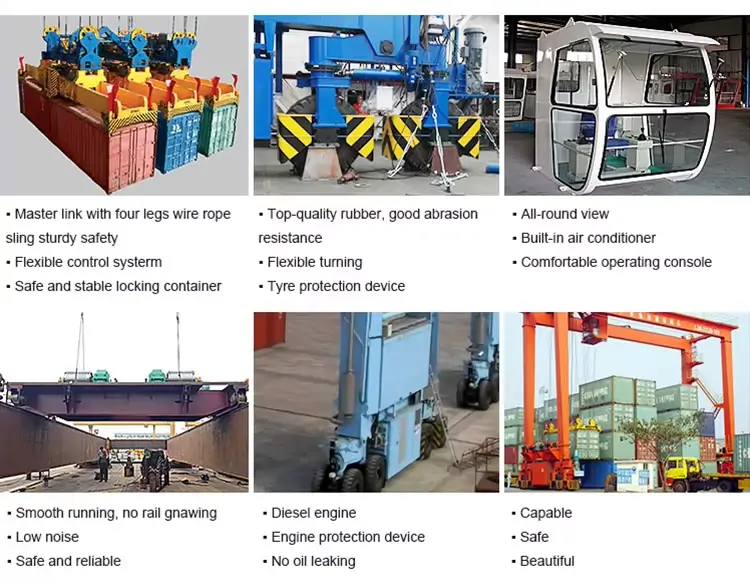RTG cranes are widely used in ports, container yards, and industrial facilities for efficient container handling and heavy lifting operations. Operating a rubber-tired gantry crane (RTG) requires precise maneuvering, heightened safety awareness, and strict adherence to standard operating procedures. Continue reading below to learn the correct operational steps, ensuring both productivity and workplace safety.

Table of Content
Preparation Before Operation
Before operating an RTG crane, proper preparation is essential to ensure smooth performance and avoid equipment damage.
First, ensure that operators are prepared. Only trained and certified personnel may operate the tire-mounted gantry crane. Conduct a safety briefing before each operation.
- Inspect the Site: Make sure the working area is flat, stable, and free of obstacles. The surface must support the weight and movement of the crane.
- Check the Crane Condition: Examine the main components, including tires, steering system, hoist, trolley, engine, hydraulic and electrical systems, for any leaks, loose parts, or abnormal sounds.
- Confirm Load Limits: Ensure the load does not exceed the rated lifting capacity. Select the appropriate lifting height and working radius.
- Power System Check: Verify hydraulic oil levels, fuel or battery power, and control panel indicators.

RTG Crane Operating Procedure
Once the preparation is complete, follow these steps for proper RTG crane operation:
- Start the Power System: Turn on the electrical control box, check the hydraulic pressure, and ensure all indicators are functioning normally.
- Warm Up the Engine: Allow the diesel or electric power system to run for a few minutes to stabilize pressure and temperature.
- Lift the Load Smoothly: Use the joystick or control panel to raise the load slowly, maintaining balance and stability throughout the lift.
- Monitor Hydraulic and Electrical Systems: Observe the pressure gauge, control signals, and noise levels. Stop immediately if any irregularity occurs.
- Move the Crane Carefully: While driving the crane on rubber tires, ensure stable ground contact and avoid sudden turns or stops.
- Lower the Load: Gradually lower the load into the designated position and ensure it is properly secured before disengaging the spreader.
Safety Precautions During RTG Crane Operation
Operating an RTG crane safely is crucial to prevent accidents and equipment damage. Follow these safety rules:
- Never exceed the rated lifting capacity or operating speed.
- Maintain a safe distance from other cranes and personnel.
- Avoid operating on soft, uneven, or muddy ground.
- Keep communication clear between operators and ground staff using radios or hand signals.
- Install and regularly test anti-sway systems, overload protection, and emergency stop devices.
In case of system abnormalities (e.g., hydraulic pressure drop, power failure, or unusual noise), stop operation immediately and perform inspection.
Conclusion
Understanding how to properly operate an RTG crane is key to ensuring safe and efficient container handling operations. By following standard procedures from site preparation to final inspection, operators can minimize downtime, extend equipment lifespan, and prevent costly accidents. Companies should always prioritize safety, adhere to manufacturer guidelines, and schedule regular maintenance to ensure optimal crane performance. If you have any related questions, feel free to contact our technical team to obtain the detailed operation manual.









